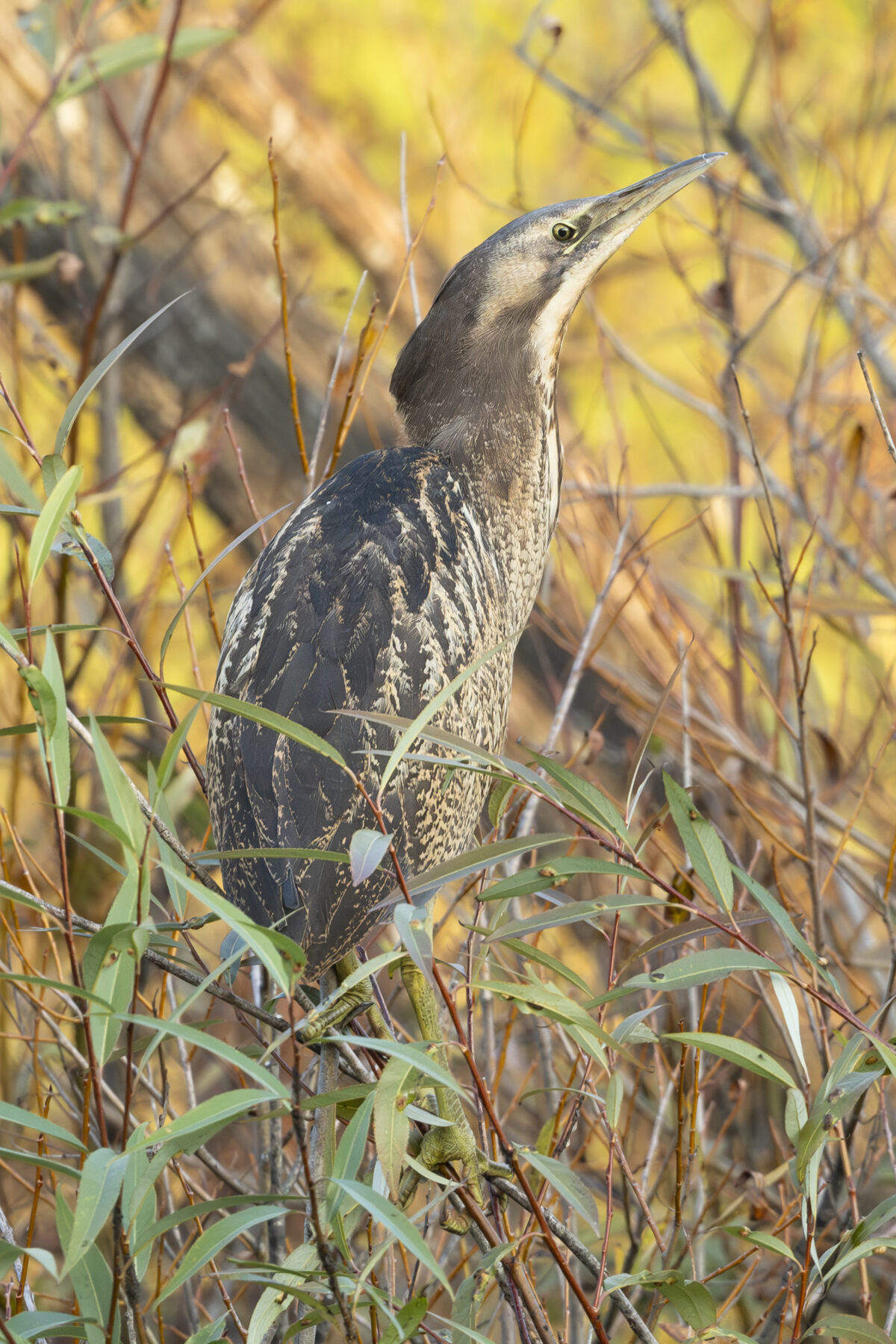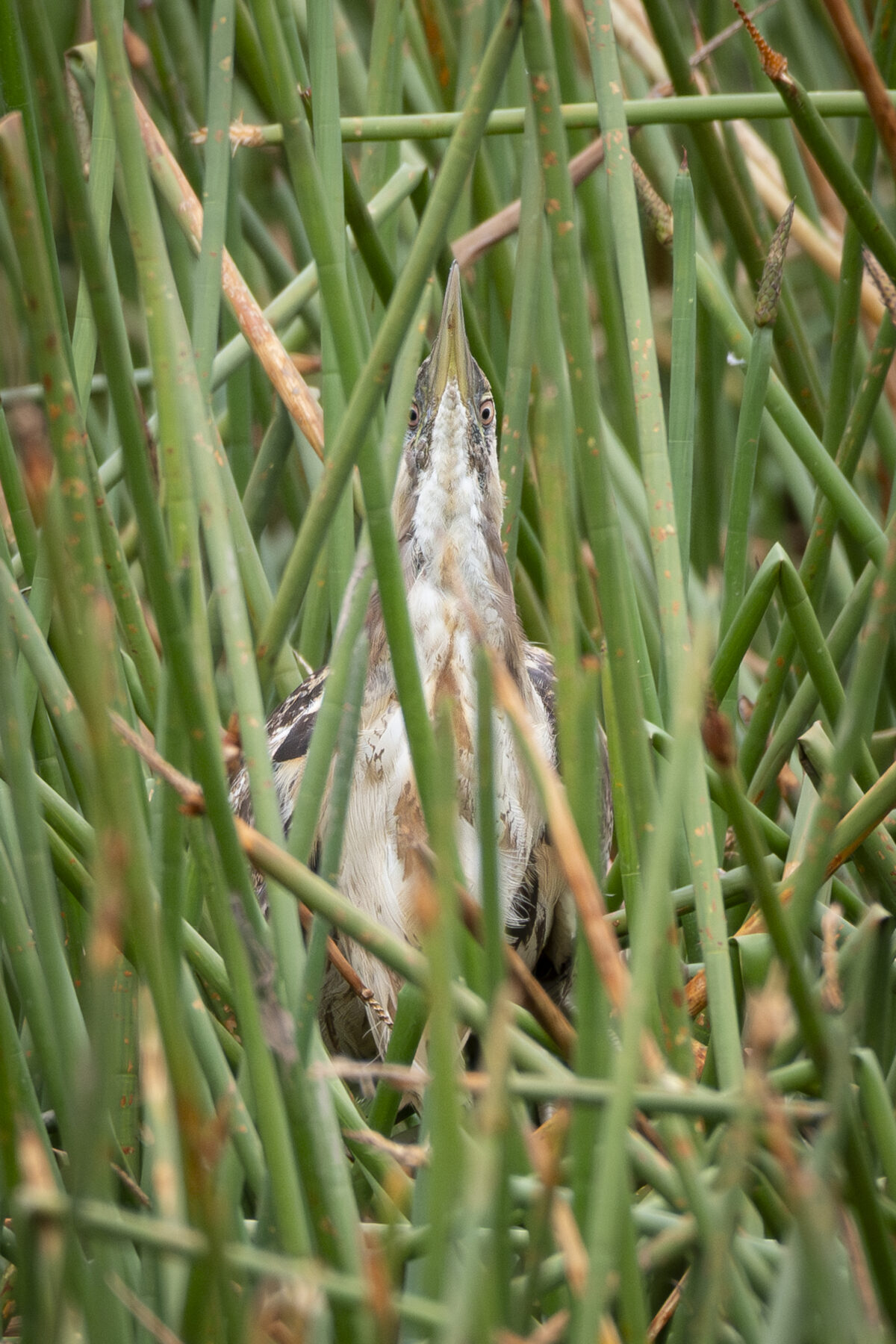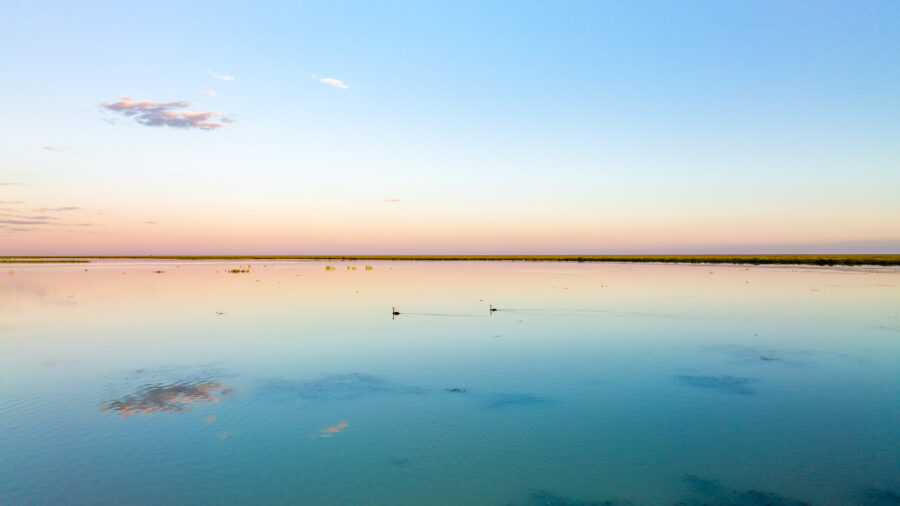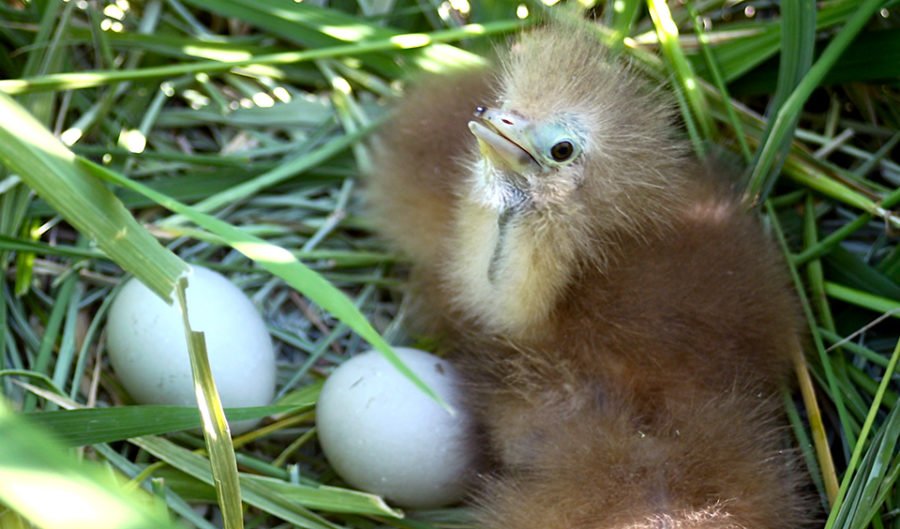‘Bunyip’ bird returns to restored Tasmanian wetlands

The Australasian bittern was once so common throughout Australia that it is thought to have inspired the great mighty mythical legend, the Bunyip.
The bird’s knack for camouflaging itself in reeds on the banks of wetlands, combined with its deep booming call, meant the bird was more often heard than seen. This provided the perfect opportunity to tell scary stories to children, to keep them away from the water.
Native to mainland Australia, Tasmania, New Zealand, and New Caledonia, Australasian bitterns (Botaurus poiciloptilus) are now listed as endangered within Australia, and vulnerable on the global IUCN Red List, with numbers continuing to fall.
Scientists believe there could be fewer than 1000 mature Australasian bitterns remaining in Australia.


This is why birder Geoff Shannon was so excited when he recently spotted not only one bittern, but a pair with four chicks at the Lagoon of Islands on Tasmania’s Central Plateau.
“I came up the hill and looked down, and I saw this lovely lagoon,” Geoff recalls. “It was full of rushes, reeds – typical bittern habitat. I stopped, got the binoculars out, and I saw a head poking above the reeds – the big bill, the eye, the neck… I’d had enough experience to be able to pick it up [that it was a bittern] very easily.
“It’s one of my most exciting birding views ever, in my whole birding life – a magnificent sight.”
Unfortunately, Geoff wasn’t able to verify his sighting with a photograph, but an audio recording now proves that Australasian bitterns are indeed living in the Lagoon of Islands.
It’s been 40-odd years since the species has been recorded at the lagoon. It was flooded in 1964 to create a dam to provide irrigation for farms along the Ouse River, and while the bitterns initially held on, none have been recorded living in the area since the early 1980s.
“It was a privilege hearing that booming call,” says Bec Sheldon, an environmental scientist and part of the Hydro Tasmania team working on the restoration of the lagoon since the dam was decommissioned in 2013.
“We’re now reaping the fruits of our rehabilitation efforts,” says Bec. “We set about recreating the natural hydrology in the lake, which has in turn brought back the native vegetation. Now we’re seeing this fantastic species move back, and the site is becoming a self-sustaining and productive natural wetland.”
The audio of the bitterns was recorded thanks to citizen science program, Call Trackers, which seeks to find and monitor ‘noisy but elusive’ species in the wild.
“I had already started to wonder about the return of the bittern here when, in 2022, I was contacted by a member of the Call Tracker team,” says Bec. “They wanted to tell me about the program and suggested the Lagoon of Islands was a high-priority site to be monitored, and asked whether we’d be interested in taking part.”
It wasn’t long before the team captured the audio recording, much to the delight of Bec and the rest of the Hydro Tasmania team.
“The bittern call is very distinctive. It’s a very loud deep booming sound, often in two to four calls in a row. I can liken it to blowing gently on the top of a glass bottle – that is what a bittern boom sounds like,” says Bec.
“Now, we’ve been lucky enough to hear it call a few times, which is a privilege.”



